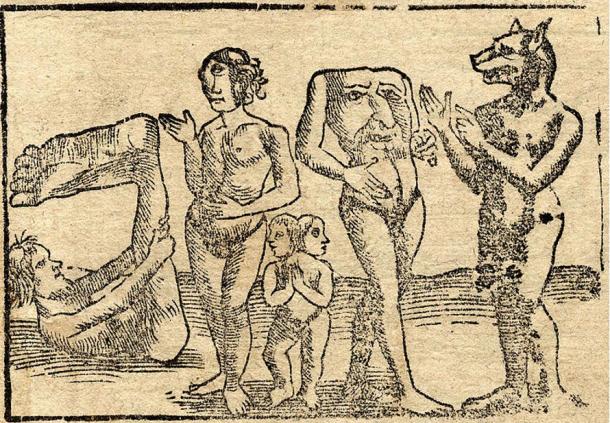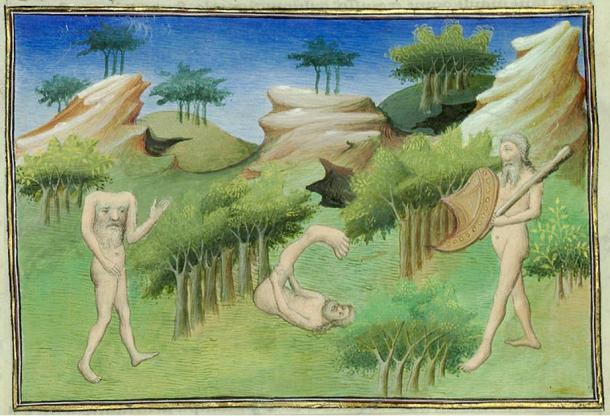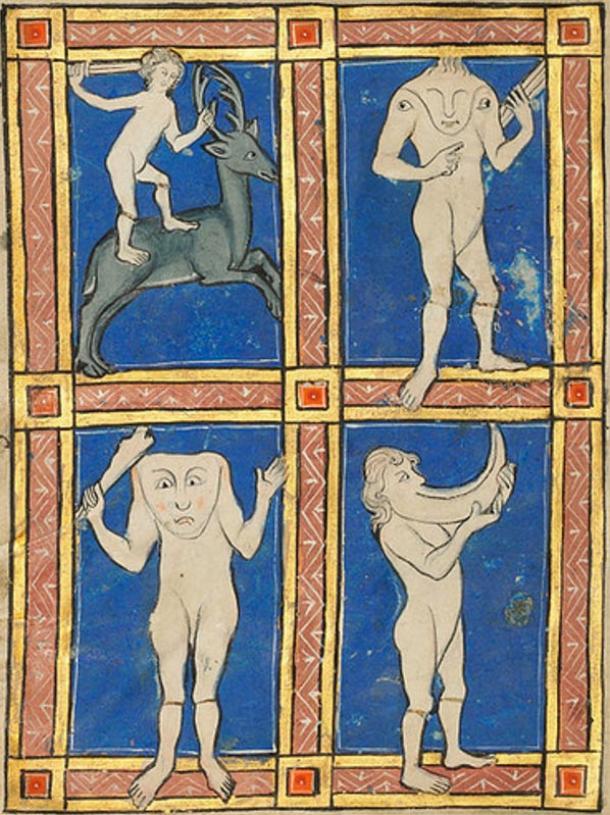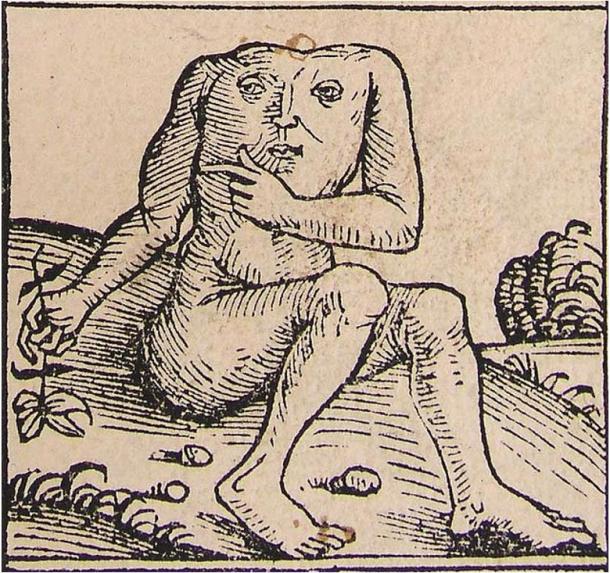Blemmyes: The Headless Men of Ancient and Medieval Mythology
The Blemmyes are an example of various species of bizarre creatures rumored, in antiquity and later, to inhabit remote parts of the world – from dog-headed humanoids to strange men with a single large foot, and many other weird and wonderful beings. Many such odd creatures are currently being explored at The Morgan Library & Museum ’s exhibition, “ Medieval Monsters: Terrors, Aliens, Wonders ,” on view until Sept. 23, 2018. The Blemmyes origins began as a tribe inhabiting the lower parts of Nubia, but later became fictionalized as a race of creatures believed to be acephalous (headless) monsters who had eyes and mouths on their chest.
The Blemmyes were first described 2,500 years ago in The Histories , written by the 5 th century BC Greek historian, Herodotus: “headless creatures with eyes in their chests (at least, that is what the Libyans say)”. According to Herodotus, these creatures inhabit the western part of Libya, which is supposed to be “very hilly and thickly wooded, and teems with wildlife”. In addition to these headless creatures, this part of the world is said to be the home of such strange creatures as enormous snakes, donkeys with horns and dog-headed creatures, all of which, the historian tells his audience, are “not merely the stuff of fables”. Herodotus, however, does not give these headless creatures of Libya a name.

An engraving showing (from left to right) a monopod or sciapod, a female cyclops, conjoined twins, a blemmye, and a cynocephali, 1544 ( Wikimedia Commons ).
The name ‘Blemmyes’ can be found in The Geography of Strabo. This 1 st century Greek geographer describes the Blemmyes not as strange monsters, but as a tribe inhabiting the lower parts of Nubia, along the Nile towards the Red Sea. It is in the work of the Roman writer, Pliny the Elder that we see the Blemmyes of Strabo equated with the headless creatures of Herodotus. In the Natural History , Pliny records that “The Blemmyæ are said to have no heads, their mouths and eyes being seated in their breasts”. It may be pointed out that like Herodotus, Pliny’s knowledge of the Blemmyes is also based on hearsay. Additionally, Pliny’s view of geography is similar to that of Herodotus, in which the edges of the known world are inhabited by strange creatures. For instance, Pliny also wrote about the Himantopodes, “a race of people with feet resembling thongs, upon which they move along by nature with a serpentine, crawling kind of gait”.
- Cynocephaly and the mythological dog-headed human
- Hereford Mappa Mundi: Legendary Cities, Monstrous Races, and Curious Beasts in a Single World Map
- The Evolution of Sea Monsters on Medieval Maps

(Wikimedia Commons )
The story of the Blemmyes survived into the Middle Ages, and makes an appearance, albeit in a slightly modifies form, in a 14 th century work known as The Travels of Sir John Mandeville . Although they are not named as Blemmyes, Mandeville describes these creatures as “folk of foul stature and of cursed kind that have no heads. And their eyes be in their shoulders”. Mandeville does not place them in Africa, however, but on an island in Asia, instead. The 16 th / 17 th century English explorer, Sir Walter Raleigh, also provides an account of creatures resembling the Blemmyes. Raleigh reports that the creatures “are called Ewaipanoma; they are reported to have their eyes in their shoulders, and their mouths in the middle of their breasts, and that a long train of hair groweth backward between their shoulders”. Unlike Herodotus, or Pliny, or Mandeville, Raleigh claims that these headless beings live in Guiana, in South America. Although Raleigh had not seen the Ewaiponama himself, he believed that they were real, based on accounts that he deemed reliable.

A Headless Man with Eyes on His Shoulders; A Headless Man with a Face on His Chest; A Man with a Large Under Lip, 13 th century illustration ( Wikimedia Commons )
Today, very few would seriously believe in the existence of such a creature as the Blemmyes. Nevertheless, this has not stopped speculation about what made the ancient authors write about such beings. One science fiction author, for instance, wrote in a short story that the Blemmyes were aliens. Another explanation is that the Blemmyes were human beings with shoulders raised to extreme heights, an anatomical modification that may have been done on their infants. Yet another theory is that the traditional desert garb and headdress (as worn by the Bedouin and other desert nomads) of the Blemmyes might have given the ancient writers the wrong impression that these people were headless.

Related Post
A shocking documentary proves that mermaids do exist
SHOCKING Revelation: Thuya, Mother of Queen Tiye, Was the Grandmother of Akhenaten and Tutankhamun—What Ancient Egyptian Secrets Did She Leave Behind?
Breaking News: Astonishing Discoveries at Karahan Tepe Confirm an Extraterrestrial Civilization is Hiding on Earth, and NO ONE Knows!
Breaking News: Researchers FINALLY Discover U.S. Navy Flight 19 After 75 Years Lost in the Bermuda Triangle!
NASA’s Secret Investigation: Uncovering the Astonishing Mystery of the UFO Crash on the Mountain!
Explosive UFO Docs LEAKED: Startling Proof That Aliens Ruled Ancient Egypt!